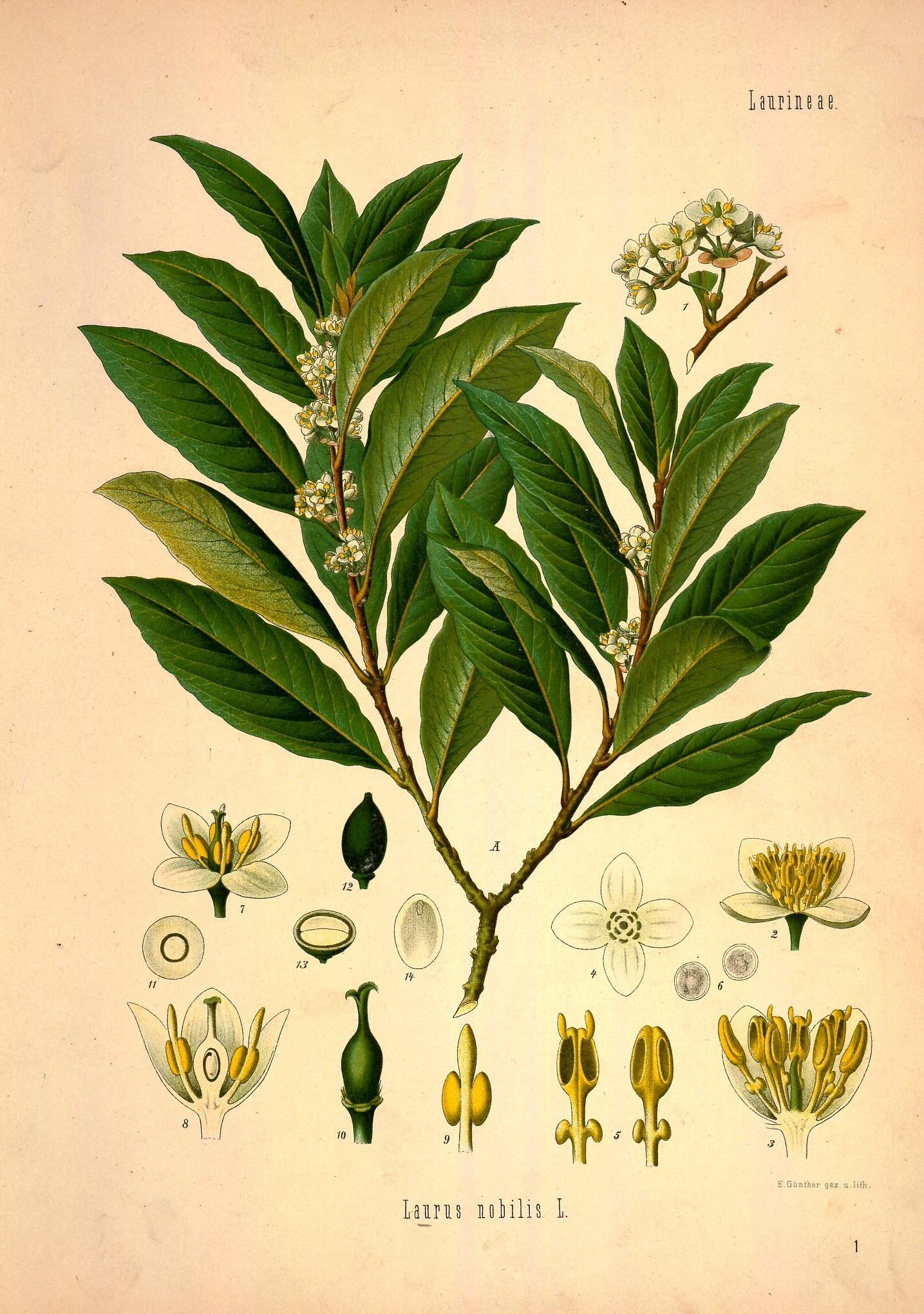One of my recent Herbology course assignments happily required me to go for a nature walk and sleuth out a medicinal herb to write about. Mikaela has been discovering a lot of Edinburgh during her long runs and has always wanted to go with me and our dog, Moo, to what she just calls ‘Hermitage Park.’ So we set off for a walk and to conquer my homework. The two of us (well, three if you count Moo) have a very special relationship. Talking is a big part of our life together; we discuss our feelings, experiences, hopes and aspirations. It was no different during this walk. We spent most of the time talking, analysing, dreaming, and as always, laughing—but most of all, soaking in the nature that surrounded us.
During our walk we came across loads of different trees with medicinal effects: birch, elm, ash, and horse chestnut, but none seemed to speak to me or my assignment seeking a winter blooming evergreen or hardy perennial, so we kept on our mission. Finally, I spotted it! A gorgeous bay tree! This was the perfect subject for me since I particularly love integrating culinary herbs into our meals and experimenting with different flavours in my cooking.
The bay tree is surrounded by a rich mythology (another of my favourite subjects). In ancient Greek, bay is called Daphne, like the nymph with whom Apollo fell in love. According to The Greek and Roman Myths, Apollo dissed Eros pathetic arrows. And, as everyone knows, you shouldn’t mock gods, not even if the criticism is justified. So Eros ruthlessly shot one of his arrows, tipped with gold, through Apollo’s heart causing him to fall desperately in love with Daphne. But Eros’ anger wasn’t appeased, so he shot a lead-tipped arrow trough Daphne’s heart. Daphne, already known to be a chaste hunter who despised men and marriage, became even more repulsed by men. Thus, Daphne fled Apollo’s advances until, in exhaustion, she turned herself into a bay laurel. In other variations of this myth, (e.g. as told in Wo hat Prometheus das Feuer versteckt) Daphne asked her father, the river god Peneios, for help and he transformed her into the tree. Apollo inconsolable, whether because of love pain or because of his wounded pride, twisted himself a crown of bay leaves and wore it in mourning.
Apollo was associated with medicine and healing probably through his son. And on this note, we find our way to herbology. The bay laurel contains volatile oils, mucilage, tannin, and resin. Sources suggest bay laurel can be used for diabetes, cancer, stomach problems, and pains (8). The Encyclopaedia of Herbal Medicine, recommends bay laurel to treat the upper digestive tract and for arthritic aches and pains. Used in the kitchen, bay laurel helps aid the digestion and the absorption of food (2). The leaves shouldn’t the chewed, as the sharp edges may cut the mouth, instead the leaf can be added while cooking to stew and soups.
Large doses of bay laurel may have a narcotic effect, which might explain why the herb was used in the Delphic oracle. In The Natural History of Pliny, the oil is used in a pomegranate rind for paralysis, spasm, sciatica, bruises, headache, catarrhs of long standing, and diseases of the ears (1). A decoction of the leaves, bark, and berries is suggested for the bladder and uterus. To neutralise the poison of wasps, bees, hornets, as well as serpents and vipers, it recommends applying the leaves topically.
The essential oil can be added to massage oils for arthritis and muscle aches and pains. It can also be added to salves for bruises, itching, and other mild skin irritations.
Culpeper referred in his Herbal to the protective virtue against devil and witches of the bay leaf, “…neither witch nor devil, thunder nor lightning, will hurt a man in the place where a Bay-tree is.” Amongst other properties, he points out that seven berries given to a woman in labour helps having a speedy delivery and the epilation of the afterbirth. Culpeper also warns not to give the berries too early, as not to induce an abortion. He further notes that the berries help all cold and rheumatic ailments (4). But as with most herbs, moderation is key and of course check with your doctor before embarking on your herbal journey.
So there it is, a lovely walk turned into a lovely lesson on one of my go-to soup spices! Tell us, did you know any of this about bay leaf? Do you have any other uses?
References
- Bostock John, Riley H. T., The Natural History of Pliny. (1856). London: Henry G. Bohn
- Chevallier Andrew, Encyclopedia of herbal Medicine. (2016). Great Britain: Dorling Kindersley Limited
- Cotterell Arthur, Mythologie. Götter, Helden, Mythen. (2004). UK: Parragon
- Culpeper Nicholas, Culpeper’s Complete Herbal. (2019). New York: Sterling
- Davis Kenneth C., Wo hat Prometheus das Feuer versteck. Alles, was Sie über die Mythen der Welt wissen sollten. (2006). Bergisch Gladbach: Verlagsgruppe Lübbe GmbH & Co.
- Früh Sigrid, Rauhnächte – Märchen, Brauchtum, Aberglaube. (1998). Waiblingen: Stendel
- Matyszak Philip, The Greek and Roman Myths. (2010). London: Thames & Hudson Ltd.
- WebMD. Bay Leaf, https://www.webmd.com/vitamins/ai/ingredientmono-685/bay-leaf
- Zuffi Stefano, La natura e i suoi simboli. Piante, fiori e animali. (2004). Milano: Mondadori Electa S.p.A.

